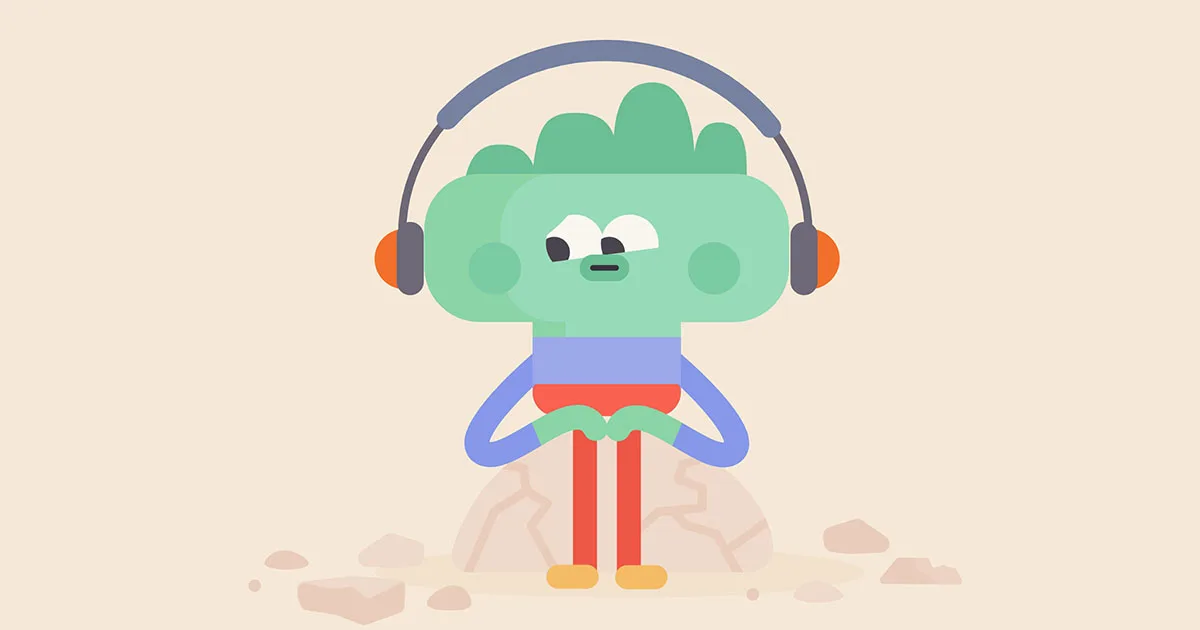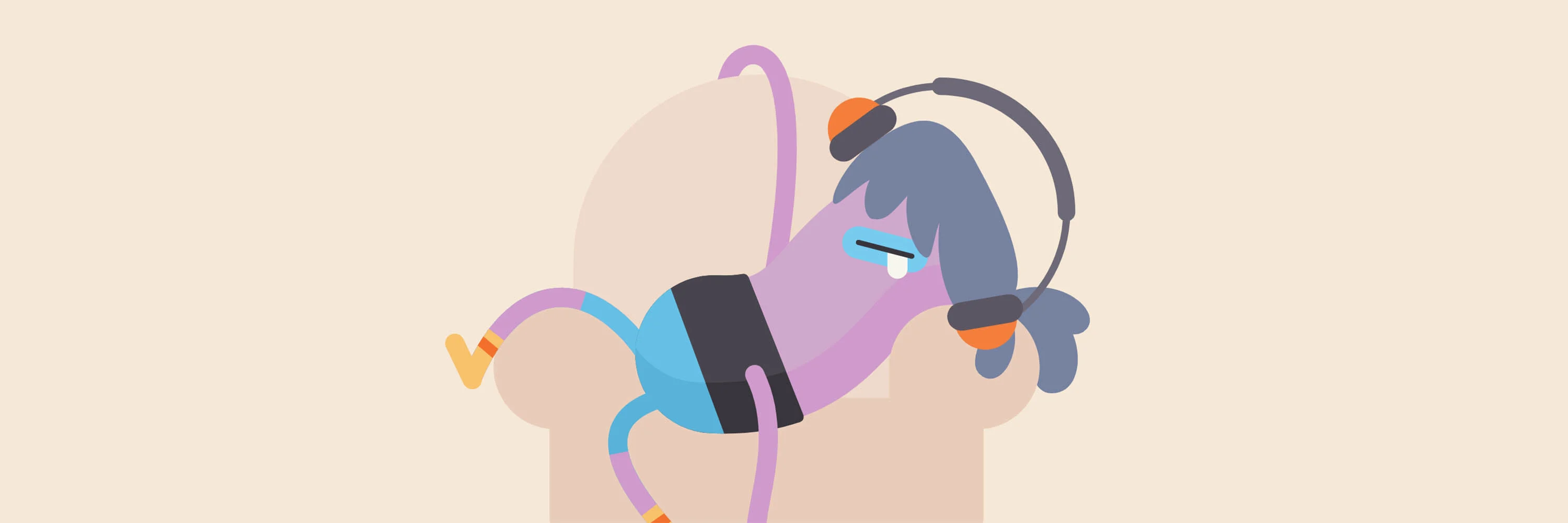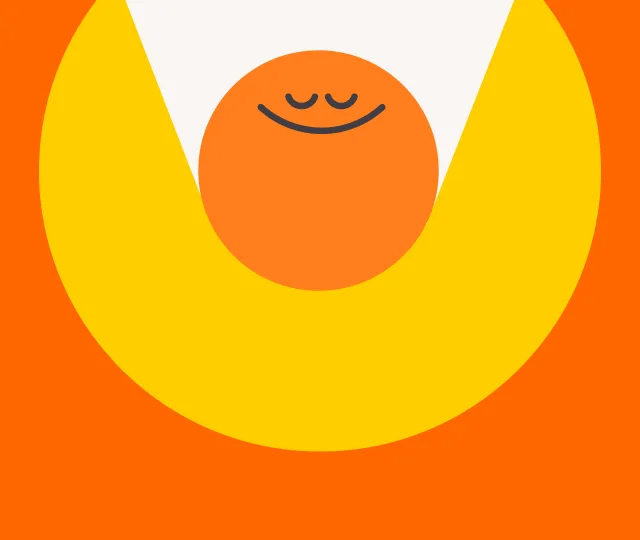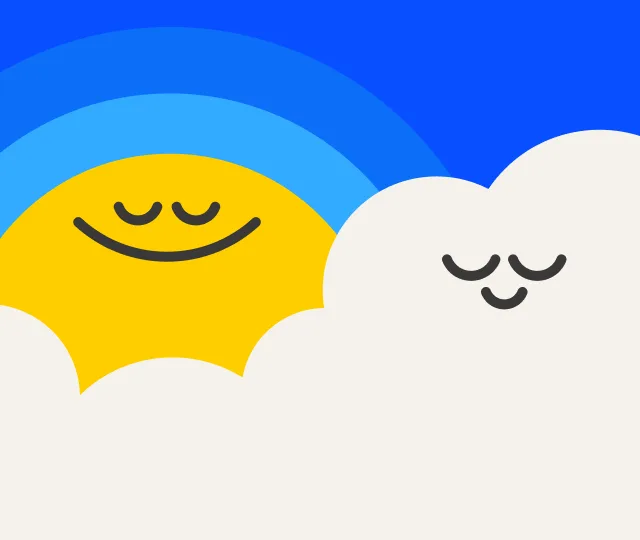How to relax
By Your Headspace Mindfulness & Meditation Experts
Feb 20, 2024
Has someone ever told you to “just relax” when you’re in the middle of a stressful situation, and you thought to yourself, “Well, that’s easy for you to say!”
Relaxation actually isn’t easy (and doesn’t come naturally) for many of us. It’s hard not to get caught up in worry during our fast-paced, time-crunched days, whether from work deadlines, financial worries, or feeling like we don’t have enough quality time for family and friends — or for ourselves and our favorite activities.
Even on vacation, have you noticed that it can take a few days to unwind? Learning how to relax is a little like learning meditation — or taking a vacation, for that matter: we can’t just do it once or twice a year and expect it to work miracles! To get better at relaxation takes practice. Luckily, there are a number of easily accessible relaxation techniques and strategies to help us consciously relax the body and mind on a regular basis.
What are relaxation techniques?
A stressful situation, or one that we perceive to be stressful, triggers the release of hormones that make our hearts pound, our breath quicken, and our muscles tense. These are normal physiological reactions, known as the “fight or flight” response, and they evolved so our ancestors could stay alert to threats such as ferocious grizzly bears or un-neighborly, club-wielding cave dwellers.
Unfortunately, when this surge of hormones happens in response to our many modern-day stressors, it can take a toll on the body and mind, and put us at risk for health problems such as heart disease, insomnia, and depression.
There are some scientifically proven relaxation techniques that counter the stress response with what’s called—not surprisingly—the “relaxation response,” in which our bodies stop releasing stress hormones, our heart rate slows, our breathing deepens, and we begin to feel a sense of calm (what a relief!). Some techniques, like deep breathing and relaxation meditation, are available to us pretty much anywhere and anytime we need it. Others, like spending time in nature, doing yoga or qigong, or even getting a massage, may take a little more planning.
The idea is to begin incorporating relaxation skills and activities that promote calm and well-being into your daily life. Try a few out and see which ones work best for you.

Deep breathing
When we’re anxious our breathing tends to be shallow and rapid. One of the simplest ways to relax is to take some deep diaphragmatic breaths, also called belly breathing. By shifting our breathing rate and pattern we can stimulate the body’s parasympathetic nervous system, and trigger a calming response, which decreases our heart rate, blood pressure, and muscle tension.
Here’s how to practice deep breathing:
Sit comfortably in a chair with your feet on the floor or lie down. Place one hand on your stomach, and the other hand over your heart.
Inhale slowly through your nose until you feel your stomach rise.
Hold your breath for a count to three.
Exhale slowly, feeling your stomach fall.
Variations of this technique may have you hold your breath for several counts after the inhale, or breathe out for a count of 5 or 7, for example. The idea, no matter how long you hold it, is to slow down the pace of the breath. The effect of breath work is cumulative, meaning the more you do it the better it works, so practice it every day, even when you’re not stressed.

Meditation for relaxation
Relaxation meditation, which typically involves cultivating calm by using an object of focus such as your breath or a visualization, is a proven tool to help manage and ease stress. And we have proof that it works! A 2018 study found that people who used Headspace for just 10 days reported an 11% decrease in stress; and after 30 days of using Headspace, they reported a 32% decrease in stress. Regular practice makes it easier to condition our bodies to find balance — that sweet spot between focus and relaxation.
Not every meditation technique is meant for relaxation, so how do you do meditation for relaxation?
Here’s an exercise to try, which uses deep breathing, body scanning, and awareness to calm the body and mind:
Focus on your breath Find a quiet space and get comfortable. Begin by taking five deep breaths — in through the nose and out through the mouth. As you breathe in, think about taking in fresh air; as you breathe out, think about letting go of any stress in the body and mind. On the last exhalation, gently close the eyes.
Check In Pause and take a few moments to settle into your body. Acknowledge your senses, noticing any sounds, smells, tastes; feel the weight of your body on the chair, or wherever you’re sitting.
Body scan Scan your body from head to toe, observing any tension or discomfort. Scan a second time, observing which parts of the body feel relaxed. Take about 20 seconds for each scan. Notice any thoughts that arise without attempting to alter them. Note your underlying mood, becoming aware of what’s there without judgment.
Back to the breath Return your attention to your breath. Breathe normally, simply observing the rising and falling sensation in your body. Focus on the quality of each breath. Is it deep? Shallow? Long or short? Fast or slow? Now, begin to silently count the breaths: 1 as you inhale, 2 as you exhale, 3 on the next inhalation, and so on, up to 10. Then start again at 1. If thoughts bubble up or your mind starts to wander, don’t worry. Just guide your attention back to the breath.
Just sit At the end of your breath work, spend 20 to 30 seconds just sitting, allowing your mind to be free. It doesn’t matter whether you’re calm and focused or you have a lot of thoughts. Just let your mind simply be.
Prepare to finish Finally, bring your awareness back to anything physical you may be experiencing. For example, your posture or where your feet make contact with the floor. Notice any sounds. Then, slowly open your eyes.
Try to recognize how your mind feels and then make an intention to carry those feelings of calm and relaxation into the rest of your day.
Progressive muscle relaxation
When you imagine yourself relaxed — perhaps on a beach chair under a beautiful summer sun — you're thinking about the location, not about why you feel so much better in that scenario. How does your body feel in those moments? You probably don't have a stiff neck, a clenched jaw, or tight tense shoulders hiked up around your ears, just to name a few. That’s because one of the characteristics of relaxation is the absence of tension in the body’s muscles.
A technique called progressive muscle relaxation is a series of exercises in which you tense your muscles as you breathe in and relax them as you breathe out. Deep muscle relaxation is incompatible with our body’s anxiety response, which is why this technique can help us feel calm (and is recommended if you have trouble sleeping.). Plus, you can do it almost anywhere. Again, the more you do it the easier it becomes. Try it and see what you think.
Choose a place where you won't be interrupted and where you can lie down on your back and stretch out comfortably, such as a carpeted floor. Before starting, refer to this list of the muscle groups in order and how to tense them.
Breathe in, and tense the first muscle group, the hands (hard but not to the point of pain or cramping) for 4 to 10 seconds.
Breathe out, and relax the muscle group quickly and completely (not gradually).
Relax for 10 to 20 seconds and then move on to the next muscle group. Notice the difference between how the muscles feel when they’re tensed and how they feel when they’re relaxed.
When you’re finished with all the muscle groups, count backwards from 5 to 1 to bring your focus back to the present.
Once you’re familiar with the exercises, you can use them selectively to relax particularly tense muscles without going through the whole routine.

Yoga, tai chi, and qigong for relaxation
Workout trends may come and go, but these three ancient practices were the original mind-body fitness routines, combining rhythmic breathing with a series of postures or flowing movements. The yogis of 5,000 years ago understood what science is now starting to confirm: coordinating breath and movement provides a mental focus that can calm a busy mind.
Of the three, yoga is the probably most mainstream, with studios and classes sprouting up in every town. Most people learn and practice yoga by taking classes, and beginner classes are a great way to try the various styles to see which one you like. If you’re a regular at your favorite studio, you can probably speak to your improved flexibility, balance, strength, and stamina, as well as the calm you feel after a class. And if you’re not a regular ...
Tai chi was first practiced in ancient China for self-defense. Today, it’s used mainly to improve health, as a low-impact, gentle form of exercise that’s safe for people of all ages.
There are many styles of tai chi, but all involve the same principles:
Slow, relaxed movements Even though the movements are slow, you’re continuously moving
Careful postures You hold specific postures as you move your body
Concentration You’re encouraged to put aside distracting thoughts while you practice
Focused breathing During tai chi, your breathing should be relaxed and deep
If you’re interested in tai chi for stress relief, it’s a good idea to start with a class to learn proper movement. There are also lots of books and videos available to watch online. Qigong (pronounced chee-gong) also originated in traditional Chinese culture and medicine. And it too is a meditative movement practice that can improve your mental and physical health. (Qi means “breath” or “energy”; “gong” translates as “exercise” or “skill.”) In recent years, Qigong therapy has attracted the attention of modern medicine and science and is now widely used in clinical settings to treat illness and promote overall well-being. Studies have shown qigong to be effective in helping to manage health issues from high blood pressure and chronic illness to anxiety, stress, even neck pain.
If you’re curious, push back from your desk, or wherever you happen to be, and try this 4-minute seated relaxation exercise from the Omega Institute. If you’re interested in learning more, the Qigong Institute website offers a wealth of resources, including videos, links to medical studies, recommended readings, and additional videos. The National Qigong Association lists conferences, talks, events, and ways to find a class or teacher in your area.

Spend time in nature to help relax
You know those days when everything seems too much and you just want to head for the hills? Go for it! Or head to the beach, a park, the woods, a grassy knoll beside a babbling stream — anyplace outdoors. Most people know they feel relaxed and good when they’re outside, but not everyone knows there’s scientific evidence about nature’s healing effects, said Dr. Eeva Karjalainen, of the Finnish Forest Research Institute. According to Karjalainen’s research, blood pressure and heart rate are lowered by being in nature; so is the production of stress hormones such as cortisol.
Being in a natural setting also reduces muscle tension.
If you can’t get to some real live greenery, additional research shows that sounds from nature — waves crashing on the beach, leaves rustling in the breeze — have a restorative effect on our minds by physically altering the connections in our brains, reducing our fight-or-flight instinct. MRI results showed that the brain activity of study participants who listened to soundscapes from natural environments (vs. manmade ones) was outward focused. (By contrast, inward-focused attention can mean worrying and ruminating and is linked to stress, anxiety, and depression.)
Getting outdoors allows us to connect to the physical beauty of our world — the oceans, flowers, trees, wildlife, and the earth — and tune into our senses, which can help alleviate negative emotions. Observing a sunset or sunrise allows us to take the focus off our own challenges.
Massage and other soothing activities
Lying on a padded massage table, you can feel your stress melt away even before your therapist enters the room. The dim lights, calming aromatherapy scent, and soothing music all encourage relaxation.
Besides just feeling amazing, massage is accepted as part of complementary and integrative medicine, which means that it’s often recommended along with standard treatment for a range of health conditions, including anxiety and insomnia related to stress. Massage affects our body’s production and regulation of neurohormones, which influence our behavior and feelings of wellbeing. A therapist’s touch tends to elevate our body’s level of dopamine, which affects inspiration, joy and enthusiasm.
The gentle pressure of massage stimulates the body’s circulation and helps us to relax and rest.

Enjoy yourself!
Going to the movies, gardening, playing a board game, or visiting a museum aren’t research-backed relaxation strategies, but if they bring you pleasure, that’s a good reason to do them! It’s no surprise to expect that you’ll feel more relaxed when you make time to pursue the activities you enjoy. At the very least, they’ll take your mind off whatever is making you anxious.
Our worried minds often distract us from scheduling things we enjoy into our day. But doing what we enjoy and find absorbing invariably boosts our mood and encourages us to be present. It makes us feel better about ourselves, and our life. Which is, really, the whole reason for getting better at relaxing.

Start meditating with Headspace
Taking proper care of your mind can help you relax. Headspace assists you in dealing with the stresses and strains of 21st century life. Our convenient online sessions can help you find increased compassion, greater focus, less anxiety, and improved feelings of well-being and happiness.
If you’re looking for an introduction to different types of meditation, check out the 10-day beginner’s course on the essentials — available with your membership or free trial. From there, once you gain more experience and confidence, you can explore the whole library of meditations and exercises, covering everything from sleep, compassion, and sports to anger, stress, and more. Get started now!


Be kind to your mind
- Access the full library of 500+ meditations on everything from stress, to resilience, to compassion
- Put your mind to bed with sleep sounds, music, and wind-down exercises
- Make mindfulness a part of your daily routine with tension-releasing workouts, relaxing yoga, Focus music playlists, and more
Annual - billed at $69.99 USD/yr
14 days free
$5.83 USD/month
Monthly
7 days free
$12.99 USD/month

Learn more about meditation

Stay in the loop
Be the first to get updates on our latest content, special offers, and new features.
By signing up, you’re agreeing to receive marketing emails from Headspace. You can unsubscribe at any time. For more details, check out our Privacy Policy.
- © 2025 Headspace Inc.
- Terms & conditions
- Privacy policy
- Consumer Health Data
- Your privacy choices
- CA Privacy Notice






